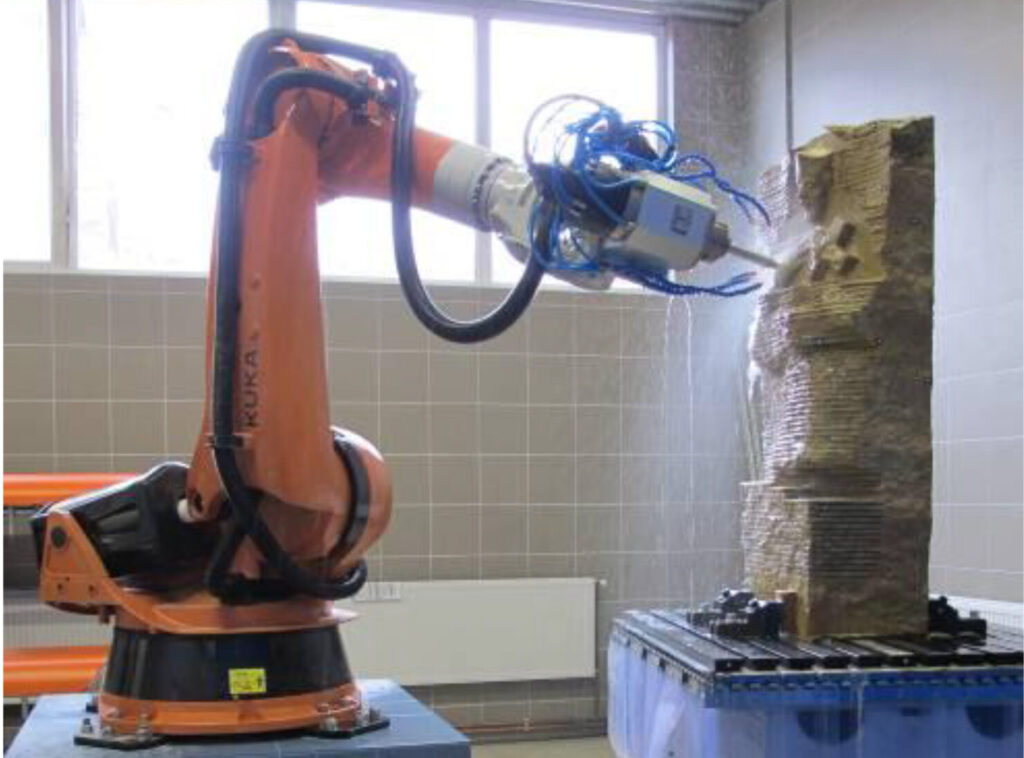Robotic arm at secondary school of sculpture art & stonemasonry in Hořice

The robotic arm thanks to its movability represents a crucial innovation in machinery complex shapes in the open space. It works with seven axes in the system of spherical or cylindrical coordinates. The robotic arm, which substitutes a human hand, has the same movability provided that a turntable is used. Most of machine tools works with the cartesian coordinate system (orthogonal) so it cannot meet requirements for shapes in the open space. The robotic arm has at its end a spindle (equivalent of human wrist) which bears a rotary tool.
The robotic arm can be programmed for easier shapes under condition that they can be expressed by mathematical functions expecially by the piecewise continuous function. This way we can produce stone constructions from fine stone such as prismatic parts, stairs, railing in helix, rotary parts, arches, rosaces, panels etc.
For the artistic creation it is necessary to process a scan of previously scanned model which is then virtually reconstructed in a computer. Mathematics of individual tools paths is not backed up by the piecewise continuous function and it reacts only on interpolation precision when measuring secant lines. The software can compile data with regard to required measures of a model – so it can work in any scale. Operation of the robotic arm is of a technical and technological matter. It is necessary to determine the technological procedure which is most suitable for the given work. It requires deep knowledge of sculptor work procedure which is necessary to accept when working with the tools. A machine can change its tools when working with them. It operates in a coarse machining mode or a fine machining mode. A final surface finish of the work is still the job for a human sculptor. Unlike machining technological work such as foundry moulds it is not important to reach precision but rather light optical properties of a work surface. The purpose of using this technology is to free the sculptor of hard physical work when working on a work of art. There is no need to move main points in a scale or in a ratio 1:1 or other measuring. Instead of producing tamped linings production technology for rare works of art it is suitable for the production of copies. The robotic arm provide extreme precision of 0.05 milimetres. In connection with a scanner and modeling it is possible to produce and renovate the works of art at the same time without touching the original piece of art.
Source: Lomy a těžba
